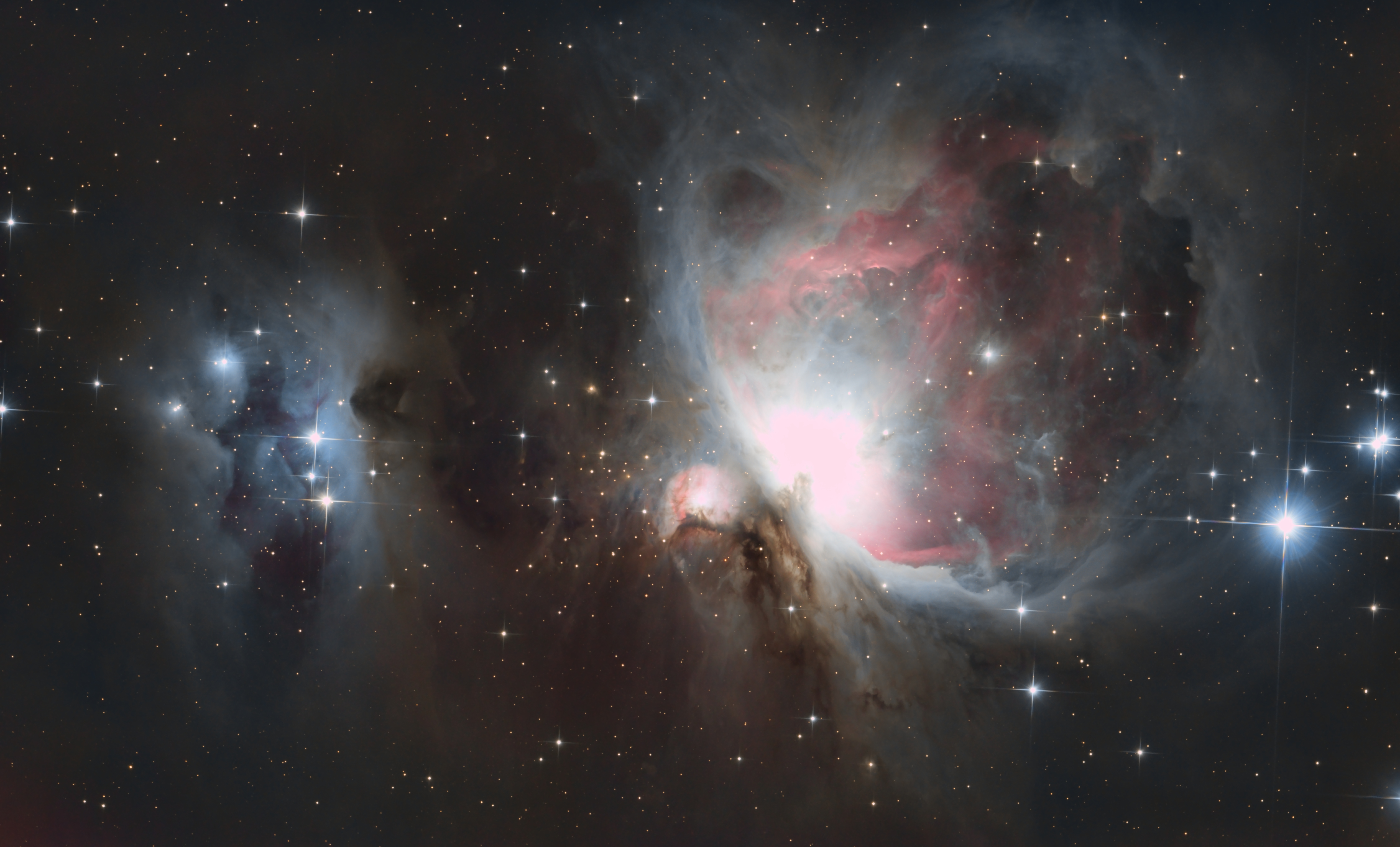Great Orion Nebula

They say M42 is the easiest DSO to image, but I'm finding it extremely difficult to pull it off well. This is my attempt of M42 from earlier this year over 2 nights, only managing 3 hours of data. Pulling out the faint stuff seems quite tough in my skies and low SNR. (Bortle 4/5) I also attempted to do an HDR core but failed to get enough data of the core.
Date Created: 2019-01-19
Date Posted: 2019-05-06
Acquisition Details:
Scope: GSO 8" F/4, flocked, DIY AutoFocuser, DIY Secondary Dew Heater Coma Corrector: SkyWatcher Aplanatic/Quattro Camera: Canon 60D DSLR (Image scale ~1.1"/pixel) Mount: EQ6-R Guide Scope: ZWO 60mm Guide Cam: QHY5LIIC 60x180s Lights @ ISO1600 (3 Hours Total Integration) 30x1.76s Flats Acquired with the NINA imaging suite. Guided with PHD2. Mount interface: EQMODProcessing Details:
Flat Calibration Debayer/Aligned/SFS/LN etc then integrated LF & DBE TGV,MMT NR (JonRista Method) HT Stretch ACDNR LHE with range mask Curves & saturation. Final LHE. Range Mask, desaturation curve (Fix the slightly pink cores of stars and blown core)Date Created: 2019-01-19
Date Posted: 2019-05-06
